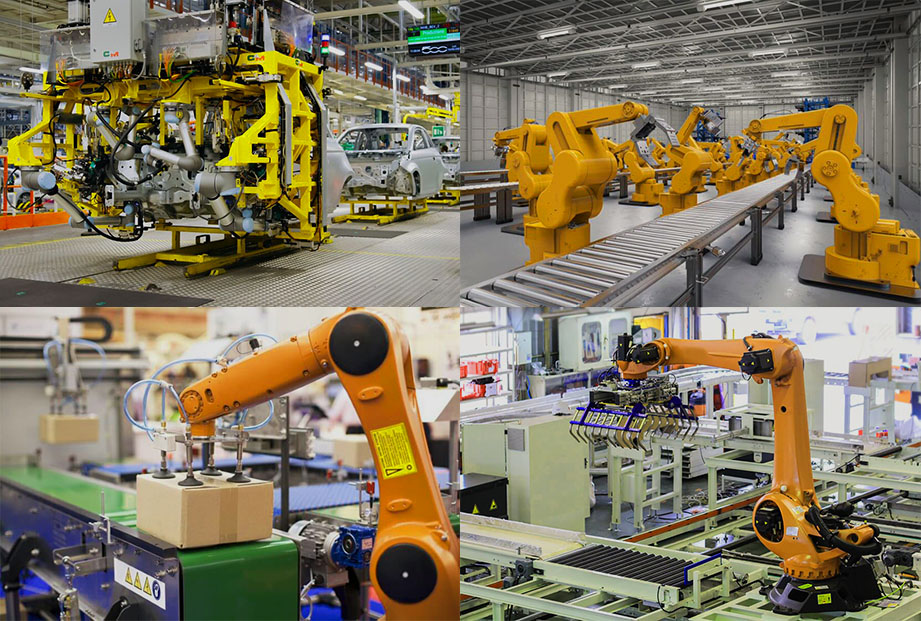Industrial robots play a key role in optimizing production, providing a number of important benefits that significantly improve the efficiency and quality of production processes.
Increased productivity is a key advantage associated with the integration of industrial robots in various sectors. These advanced machines operate at high speeds, ensuring a continuous and efficient workflow within production environments. The ability of industrial robots to work 24/7 without the need for breaks or adherence to traditional working hours significantly enhances overall productivity.
The precision and speed of industrial robots enable them to perform tasks with a level of efficiency that surpasses manual labor. This not only leads to a reduction in production time but also ensures a consistent output of high-quality products. By automating repetitive and time-consuming processes, industrial robots contribute to a substantial increase in overall production capacity.
Furthermore, the reliability and accuracy of industrial robots minimize the occurrence of errors in tasks such as assembly, welding, or material handling. This reduction in errors not only improves the overall quality of the manufactured goods but also eliminates the need for rework, saving both time and resources.

Cost reduction is a significant advantage attributed to the utilization of industrial robots across diverse industries. The implementation of these automated systems brings about several cost-saving benefits, contributing to improved financial efficiency for manufacturing enterprises.
Labor Cost Savings
One of the primary contributors to cost reduction is the decreased dependence on human labor. Industrial robots can perform tasks around the clock without the need for breaks, holidays, or overtime pay. This not only reduces labor expenses but also ensures a consistent level of productivity.
Error Minimization
Industrial robots are equipped with precision and accuracy, minimizing errors in various tasks such as assembly, welding, and material handling. This reduction in errors leads to a decrease in the need for rework and the associated costs of correcting mistakes.
Optimized Resource Utilization
Automated systems, including industrial robots, optimize the utilization of resources such as raw materials and energy. They can be programmed to perform tasks with minimal waste, reducing material costs and promoting more efficient energy consumption.
Enhanced Operational Efficiency
Industrial robots excel in performing repetitive and mundane tasks with speed and efficiency. This efficiency translates to streamlined production processes, shorter cycle times, and reduced operational costs.
Decreased Downtime
Industrial robots are designed for continuous operation, minimizing downtime associated with human factors like fatigue, breaks, and shifts. This leads to improved production uptime, ensuring that machinery operates at maximum capacity.
Quality Control Cost Reduction
The precision and consistency of industrial robots contribute to improved product quality. This, in turn, reduces the costs associated with quality control measures, inspections, and potential product recalls.
The integration of industrial robots leads to a significant improvement in product quality. These advanced machines, equipped with high-precision sensors and control systems, execute tasks with unparalleled accuracy. This precision ensures that products meet exact specifications and adhere to stringent quality standards.
Consistency is a key benefit provided by industrial robots. They perform tasks with a level of uniformity that is challenging to achieve with manual labor. This consistency is particularly crucial in industries where even minor variations can impact the functionality and reliability of the final products, such as automotive and electronics.
The automation facilitated by industrial robots results in a substantial reduction in defects and errors during manufacturing processes. By following programmed instructions precisely, robots minimize the likelihood of mistakes that may arise from human factors, such as fatigue or oversight.
Industrial robots can also play a crucial role in quality control processes. They conduct thorough and consistent inspections of products, contributing to the early detection of potential defects. This ensures that only high-quality items reach the end of the production line.
Moreover, the accuracy and reliability of industrial robots minimize the need for rework and associated costs. This not only saves resources but also contributes to a more sustainable and environmentally friendly manufacturing process.
Industries with stringent regulatory requirements benefit from the precision and reliability of industrial robots. Consistently meeting or exceeding regulatory standards is crucial for product compliance, avoiding costly penalties and reputational damage.
The deployment of industrial robots significantly enhances work safety across various industries. By entrusting hazardous tasks to robots, the risk of accidents and injuries associated with heavy lifting, exposure to dangerous materials, and repetitive motions is minimized. Robots handle these tasks with precision and predictability, ensuring controlled execution and reducing the likelihood of unexpected events that could endanger human workers.
The use of industrial robots also minimizes human exposure to risks by allowing machines to handle dangerous tasks directly. This reduces the chances of accidents, occupational injuries, and long-term health issues that may arise from prolonged exposure to hazardous conditions.
Industrial robots contribute to the mitigation of occupational health risks by taking on repetitive and physically demanding tasks, alleviating the physical strain associated with these activities. Additionally, the ability of robots to operate continuously without fatigue is particularly beneficial in tasks requiring constant vigilance, reducing the risk of errors or accidents associated with human fatigue during extended work hours.
The introduction of collaborative robots, or cobots, further enhances work safety. Cobots are designed to work alongside humans, fostering a collaborative and safe working environment. They can assist with tasks requiring human dexterity while maintaining a high level of safety.